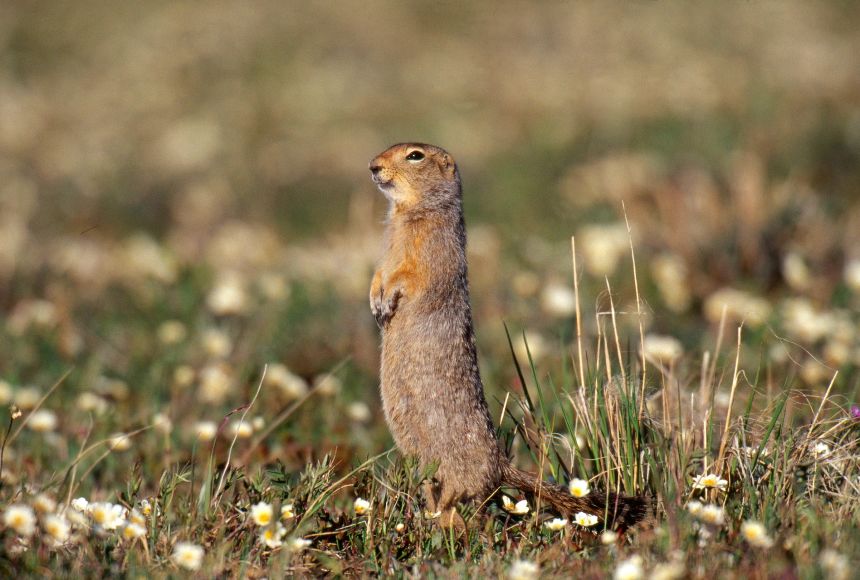For people who aren't fans of winter, animals that hibernate seem to have the right idea: It's the equivalent of burying your head under the covers until spring comes—isn't it? Not quite. Read on for more behind the science of hibernation.
What Is Hibernation?
Despite what you may have heard, species that hibernate don’t “sleep” during the winter.
Hibernation is an extended form of torpor, a state where metabolism is depressed to less than five percent of normal. “Most of the physiological functions are extremely slowed down or completely halted,” says Marina Blanco, a postdoctoral associate at the Duke Lemur Center in Durham, North Carolina, United States, who studies the dwarf lemurs (Cheirogaleus spp.) of Madagascar—the only primates that hibernate on a regular schedule.
For example, when dwarf lemurs hibernate, they reduce their heart rates from over 300 beats per minute to fewer than six, Blanco says. And instead of breathing about every second, they can go up to 10 minutes without taking a breath. Their brain activity “becomes undetectable.”
This is very different from sleep, which is a gentle resting state where unconscious functions are still performed. In fact, Blanco’s research has found that hibernators have to undergo periodic arousals so they can catch some sleep!
Why Do Animals Hibernate?
Put simply: “Hibernation is a means of energy conservation,” says Kelly Drew, a neuropharmacologist at the University of Alaska Fairbanks in the United States. She studies the brain chemistry of hibernating Arctic ground squirrels (Spermophilus parryii).
While hibernation is most often seen as a seasonal behavior, it’s not exclusive to cold-weather critters. There are tropical hibernators that may do so to stay cool in the heat.
Temperature isn’t always a factor. “Some species hibernate in response to food shortages,” Drew notes. For example, echidnas in Australia will hibernate after fires, waiting until food resources rebound to resume normal activities.
Recent studies have even suggested a third reason: protection. When hibernating, “you don’t smell; you don't make any noise; you don't make any movements; so you are very hard to detect for predator,” says Thomas Ruf, a professor of animal physiology at the University of Veterinary Medicine in Vienna, Austria. His work has shown that small mammals are five times more likely to die each month when active than when hibernating.
What Actually Happens when Animals Hibernate?
To slow their metabolism, animals cool their bodies by 5° to 10°C (9° to 18°F) on average. The Arctic ground squirrels Drew works on can take this much further, supercooling to subfreezing temperatures.
Drew’s research has shown that cooling is likely regulated by levels of adenosine in the brain. Not only does adenosine ramp up in winter in ground squirrels, the receptors for the molecule become more sensitive to it.
But species don’t stay in their cold, comatose state for the duration of their dormant period. About 80 percent of their energy is spent intermittently waking and warming up.
Why they do this is “one of the greatest mysteries” of the field, Ruf says. Some think they need to turn back on their immune systems to fight disease, while others think they may simply awaken so they can sleep.
Unfortunately, these arousals may drive hibernating species to extinction as our climate changes; scientists have found that animals stay active longer during arousal periods as ambient temperatures rise, depleting more of the energy they are trying to conserve.
What Kinds of Animals Hibernate?
One bird and a variety of amphibians, reptiles, and insects also exhibit hibernation-like states. There is even at least one fish—the Antarctic cod (Dissostichus mawsoni)—that slows down its metabolism in winter, becoming 1/20 less active.
And, of course, there are lots of mammals. While bears might be the first that come to mind, for years questions have surrounded whether bears are true hibernators. Unlike animals that stir regularly during hibernation, bears can go for 100 days or so without needing to wake to consume or pass anything, and they can be aroused much more easily than typical hibernators. The U.S. National Park Service suggests they are super hibernators.
Most mammalian hibernators are on the smaller side. “The average hibernator weighs only 70 grams,” Ruf says. That’s because little bodies have high surface area to volume ratios, making it more taxing for them to stay warm in cold weather—so they need the seasonal energy savings more than larger animals.
What Animal Hibernates the Longest?
It’s harder than you’d think to award a prize for longest duration of hibernation. The obvious choice would be the edible dormice (Glis glis) Ruf works with—they can stay dormant for more than 11 months at a time in the wild. To pull that off, they have to double or even triple their body weight while active. (That’s where they get their name: Romans considered their fat, tender, hibernation-ready bodies a delicacy.)
In one experiment, however, a big brown bat (Eptesicus fuscus) hibernated in a refrigerator for 344 days, suggesting bats may deserve the title (although, the animal didn’t choose to do so and didn’t survive the feat).
